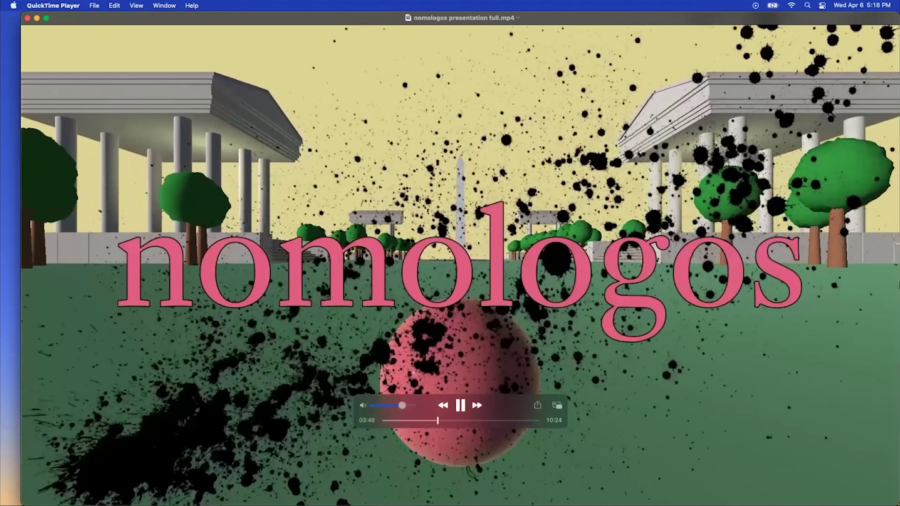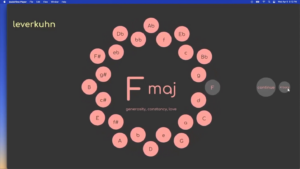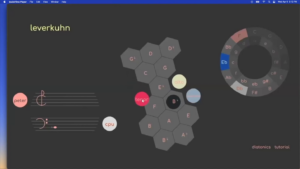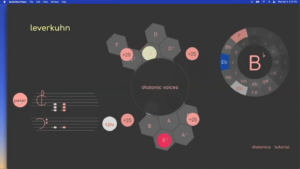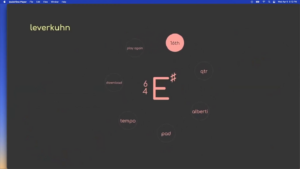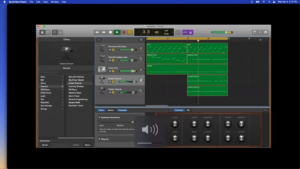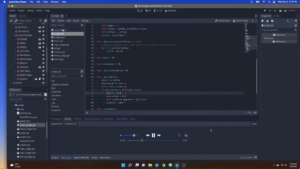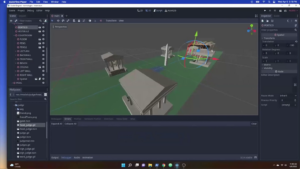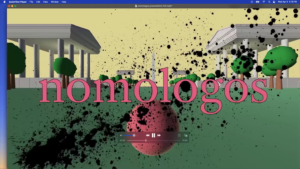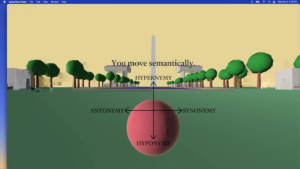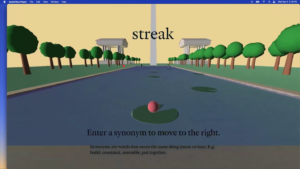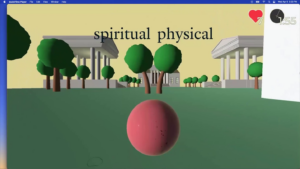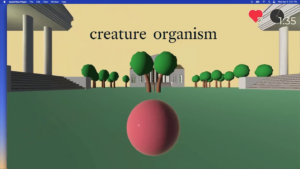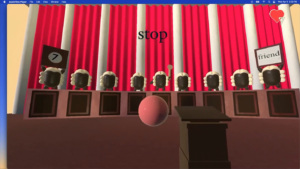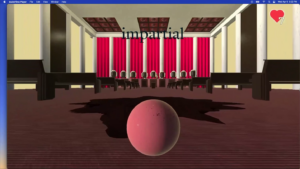Golan Levin: Good evening. And welcome back to the presentations of Shall Make, Shall Be. This is our final evening, but the first of five presentations this evening. And our first presenter tonight is Peter Bradley, whose project considered the Sixth Amendment.
Peter Bradley is a conceptual artist whose recent work is about computers and metaphysics. Applied first to music and the concept of keys, and now to language and the notion of semantic similarity, his practice aims to test the limits of computation, to capture the meaning of an idea as its being is reduced to quantity. Peter lives in New York City and tours as a member of Japanese Breakfast. Peter Bradley.
Peter Bradley: Hi Golan. Thank you for that introduction. Hello everyone.
As you mentioned, my day job is not really as computer scientist or a game designer per se, or even as an artist really. I’m a guitarist in a band. And my background from a university perspective is really in the humanities. I studied French and comparative literature, and I studied philosophy and aesthetics. However, I got interested in this line of work and in game design a few years ago when I had an idea for a board game which was about music. And specifically the concept of a key in music. I read a really fantastic novel by [Tomas Ma?] that told the story of a fictional composer in the 20th century. And it inspired me to create this game which I call Leverkuhn. I’m gonna show a trailer.
[narrating from 1:49]
So in that game you select a home key here. And you’re pitted against a computer opponent who is playing for its own key as you go back and forth, trading chords, creating a song.
At the end of the game, you end up with this kind of mini representation of the little song you put together. Then you take that download and create something [inaudible].
[narration ends at 3:10]
The thing that really interested me in work on Leverkuhn was this idea of a game as an essay. Like, a game that somehow takes a position or a theme. Like in this case, the code actually embodies some ideas that I came to have about the concept of the key, how it functions in music, what the limits of one key are into another.
When I finished that work, I became interested in a subset of computer science called natural language processing. And I knew that the next project I wanted to work on would deal somehow with language. Within that space there’s an idea called a word vector, which is an important concept in the idea of how we represent words computationally, how they might be reduced to number in one fashion or another so that the computer can work with them if you’re doing some kind of like AI research on human language. It’s used in all sorts of different approaches.
And as I was reading up on this concept of word vectors, I started to think about how we might represent language in space. And that became sort of…just the inkling of an idea for my next project. There’s a linguist called Saussure who is an important 20th century thinker who created this idea of differential net of meaning. Which means that a word signifies in such a fashion as it’s related to all the other words around it.
Take a word like “cat,” for instance. It’s anchored in language along categories of similarity and difference. And categories above it and items, or the category of “types of cats” underneath it. To kind of simplify the whole idea. So you know, a cat is a pet. In our culture a cat is the opposite of a dog. You bring to certain words your own psychological formation and personal history that also contributes to that meeting. So for me “cat” is connected to this Baudelaire poem that I studied in college that I really love and it has all these associations about like 19th century Paris or something like that.
And I wanted to sort of just distill this idea of a semantic net—that is the way that one word is ingrained with and meshed with all of the others in the way that it acquires meaning—and present it in a spatial fashion that people could just traverse.
That’s about the time that I became aware of the Shall Make, Shall Be proposal. And I took a look at the amendments and I guess the First Amendment was in some ways a kind of natural companion to this idea of language and what I wanted to do. But, at the same time I was really captivated by an old philosophical metaphor, which is the prison-house of language. It’s something that Nietzsche said and Jacobson took up. The idea being that when you’re enmeshed in language in the fashion I’m talking about, you can’t escape it. It’s just this sort of like Kafkaesque house of signifiers that are constantly relating to one another. And I thought that there was something just really poetic and interesting about that that could serve as the fundamental theme of the game.
So, I hit on the Sixth Amendment, which deals with the rights of the accused in criminal proceedings. And set about work trying to get to the back end of what would be an enormous dictionary, more or less, that would serve as a way to navigate this linguistic space.
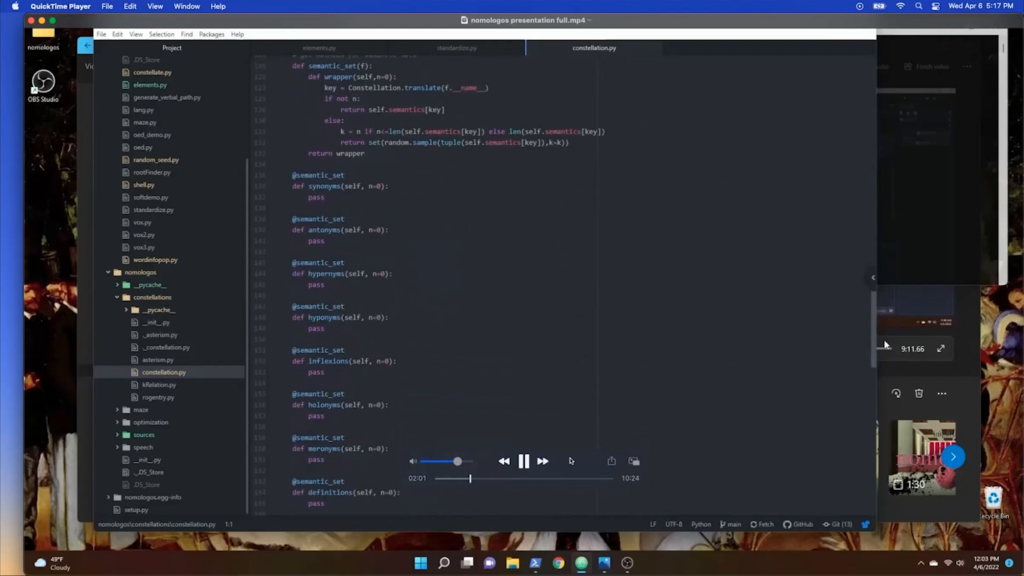
This is just a Python library that I wrote to begin this process. And you can see here this idea of semantics sets. So that’s what I was trying to explain perhaps a little bit poorly earlier. If we have a given word, there’s an axis of similarity, and an axis of category. Which I took to be like the fundamental organizing principle to get towards the meaning.
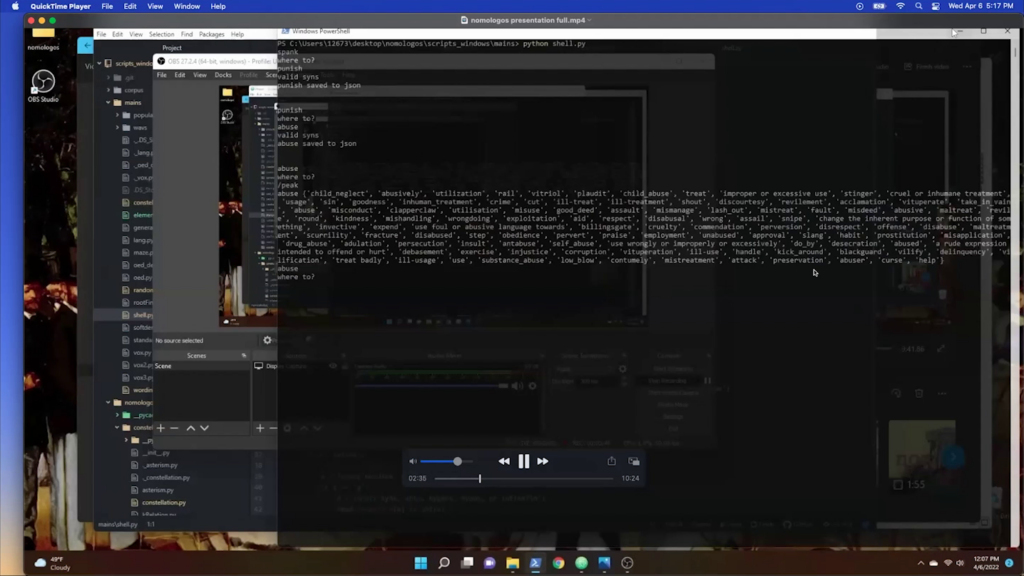
Once that backend was built out, I could do something like this, which is just kind of a shell representation of what happens in the actual game. Given a word like “abuse,” I’ve gone and mined from a zillion different sources all of these closely-related words. Either on that category axis or on the similitude axis. And you can just see how they’re kind of relating together.
And then, I got this game engine called Godot. It’s like an open source version of Unity. This is just an example of all the zillions of lines of code that are necessary to create a video game. And it’s a great tool, though. You can sort of have your world, and it keeps all of your resources nice and well-organized for you as you’re building out your idea.
Now we’ll transition into some actual game footage. This is the introduction. The conceit is that you’re a ball of ink on the national mall and you’re trying to get to the Supreme Courthouse in order to sort of argue your case.
But as the game says, you move semantically. It’s kind of a hard concept to explain quite quickly. So we get into this tutorial which I hope makes it nice and clear to players.
In real life the game is one long sequence, but I had to chop it up just for the sake of screencaps. So, a synonym is gonna move you to the right, and an antonym will move you to the left. Jumping or moving forward, which in a hardcore linguistic sense is called a hypernym, is accomplished by sort of supplying a category. So in that sense “size” is a category that contains “small.” Or the opposite, “length” is contained in the category of “size.”
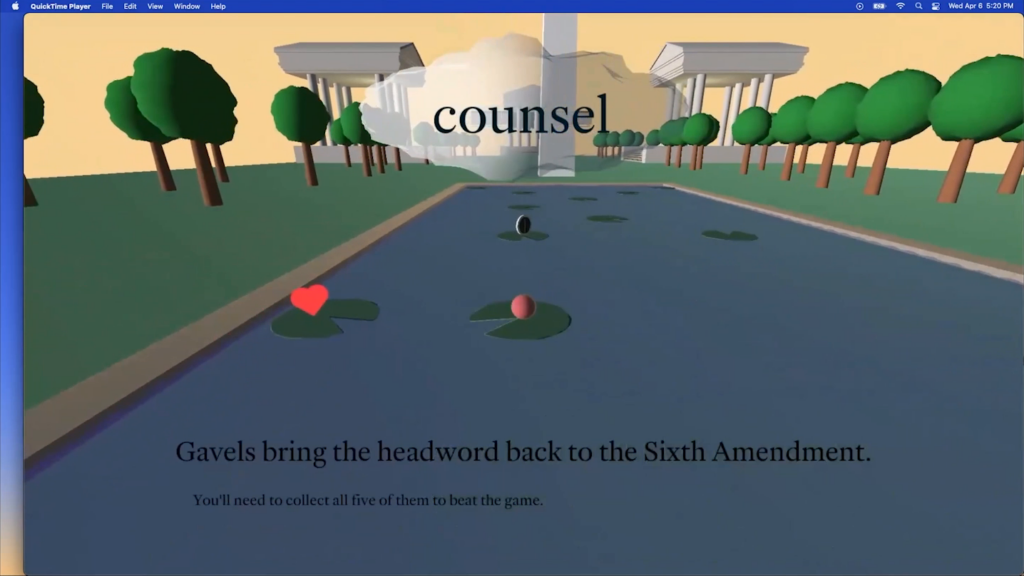
You can also change parts of speech in place, or submit words that’re contained in other words or that contain words in them. And then the gavel is a key concept here, as it sort of bridges the gap between the amendment and this more free play of just language. They occur throughout the different levels, and they come back to the key concepts of the Sixth Amendment, or what I’ve identified as the most important words that contribute to its meaning, one of which is “counsel.” And then, just like in quite a lot of video games like this there’s a time element and a life element.
Once you move your way through this little tutorial and the lily pads, you get into sort of a time trial component which I think is really fun. You’re up against the clock here, and you’re trying to avoid these obstacles by supplying new words to that headword on the screen, which I call the seed word. A creature is an organism, type thereof. We get another gavel so we get into this world of counsel/attorney, what that really means.
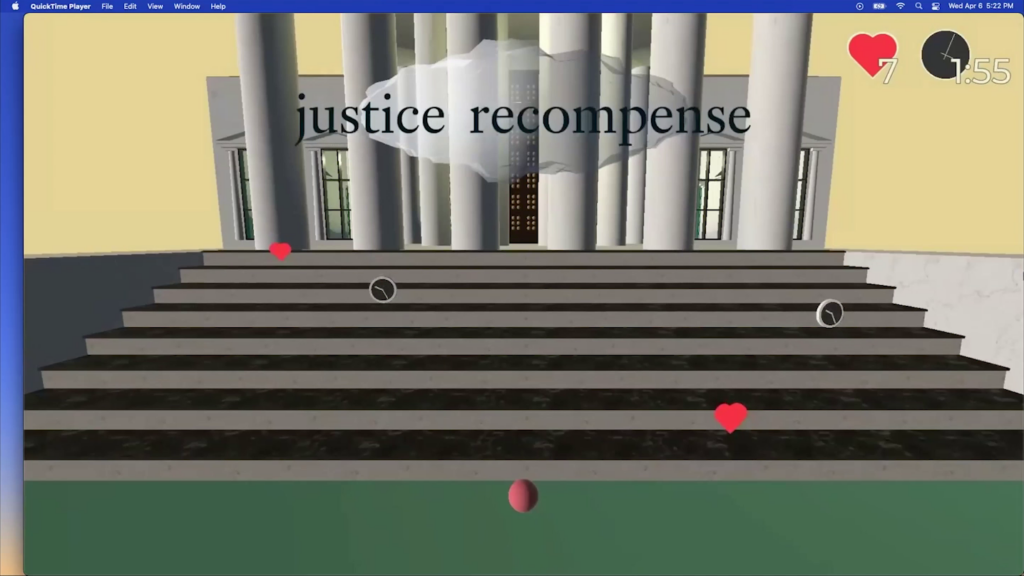
The next segment is the stairs. Once I kinda had this concept we’re just running with different iterations of how we can put those linguistic moves together. So whereas the time trial is kind of more about the similitude axis—supplying synonyms or antonyms as you try to understand the word on the screen—this one is very much about the categorical axis and what you think about the containing categories that something like “justice” or “recompense” might fit into.
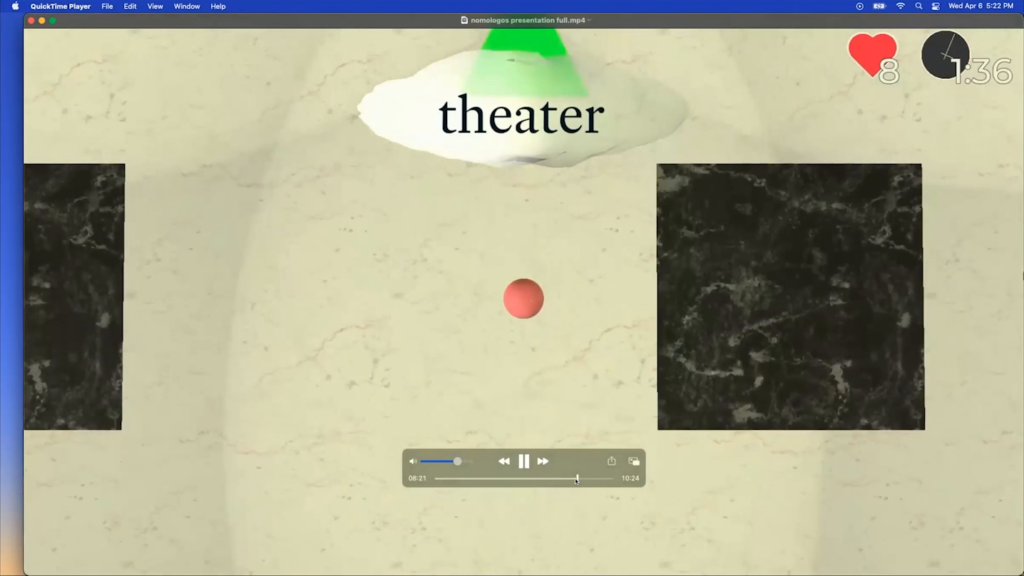
There’s another little room in here. This one is kinda like a tile game with an overhead look, and you’re attempting to avoid black tiles as you make your way through the room.
And then this is the final level, or segment if you want, in which you finally make it into the Supreme Court. Still kind of working on the architecture. I think it sort of looks like a cheap megachurch at the moment. It’ll get there. That’s ink.
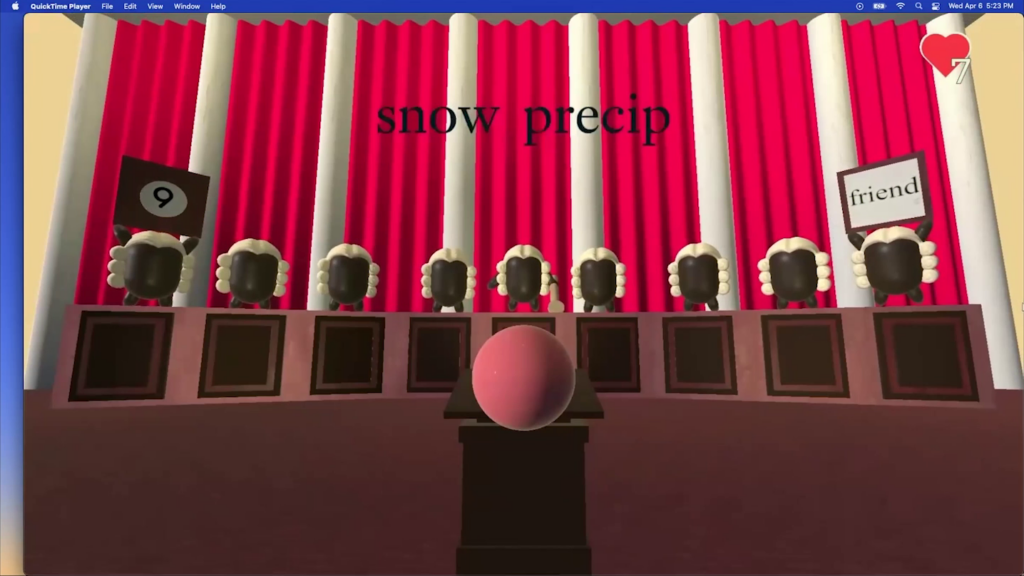
And then this last game, the idea is that you move from one word to another—so here from “snow” to “friend” in nine moves or less. I think I’ll probably relate these closer to those key terms that I was talking about in the amendment before: speedy, public, nature, cause, witness. Although I am quite interested in just these sort of unassuming but very full, simple words and how you might be able to move from one to another.
So that’s the game where it stands. Development is really close to being finished. I think that in a lot of ways it enacts legal history. Just like, if you are tuned into Supreme Court oral arguments or Supreme Court papers at all, they spent a ton of time trying to figure out what is the meaning of a term. Like I was listening to a case from this term about transportation workers. And the whole three hours of oral argument were devoted to the idea of like what is a stevedore, which is a person who moves cargo to and from ships. And whether or not “stevedore” could be contained in the category of transportation worker. And similarly I think that the case history of the Sixth Amendment is like what I was saying about these key terms. Like what counts as speedy. How do we understand that word?
So my hope is that ingraining people in this sort of semantic nexus as they try to associate their way around a word like “speedy” or “public” or “nature” ultimately brings them closer to the meaning of those terms and kind of enacts that lawyerly or jurisprudential type of semantics. Thank you.
